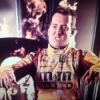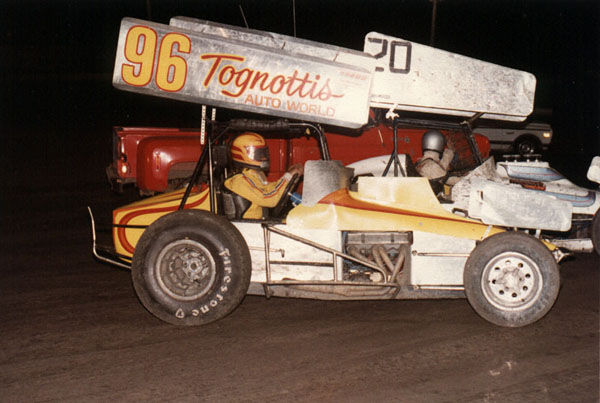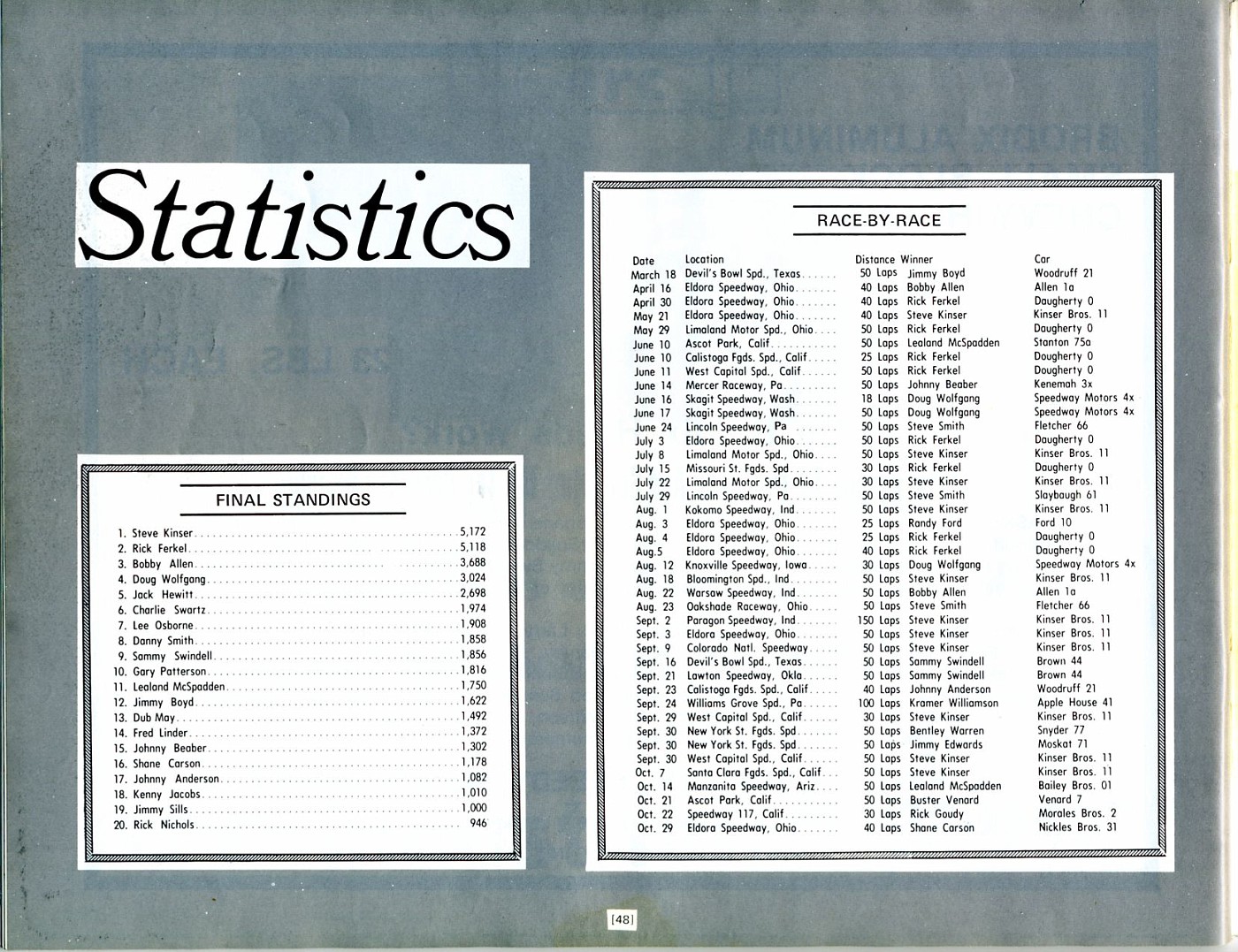Originally posted by fines
Jud Larson only ever drove IMCA when he was trying to restart his career. After failing to get anywhere in AAA up until 1953, he switched to the "outlaws" and was with the leaders from the word go, then after two-and-a-half years got his chance to prove himself as a substitute for Pat Flaherty. After his aleged heart attack he started all over again with IMCA in 1963, but only as a warm-up. As soon as he was fit enough he was racing with USAC again. When he began to apply his considerable skills, Larson's frame was too big for IMCA, he was only loafing about there.
Cotton Musick??? - you must be joking! I've never heard of him outside UMCA, what has he ever done except winning that amateur flivver championship? You're not, per chance, rolling all of the Texas Musick's success into Cotton's port folio, are you? Even then, none of them (Ben, Morris, Len, Lyn and Rabbit) were really first division stuff, mind you.
Johnny Rutherford didn't even run two full years of IMCA, and changed to USAC while leading IMCA points. No, he certainly wasn't third or fourth division stuff, that's why he outgrew them so fast.
Jan Opperman an IMCA driver? Op raced and won everywhere, but he was never an IMCA regular, just like he never was a USAC regular.
Gordon Woolley - now here you are onto something, just like Jerry Blundy he should have been running USAC, instead of preying on the defenceless in IMCA, CRA and what-have-you. One of the failings of the US motor sports "system" is the absence of a clear structure outside of AAA and USAC's hierarchy. It allowed talents like those to get virtually "lost" - in my mind, they didn't have the guts to prove themselves with the best or, like Jerry Richert, packed in as soon as the going got tough. Not a sign of a first division driver, I'm afraid.
Your telling off of USAC as "elitist" is typical of the US racing fan used to and dulled by the continuous hype by all those sanctioning bodies that grazed the nation. Only in the US... can a racing driver, tired of ever making the big breakthrough, virtually retire to become a fairground attraction alongside The Freak Show and Gargantua the Great Gorilla, and still be regarded as the Greatest Sprint Car Driver Ever - Gus Schrader, anyone?
Journals like NSSN did their best by reporting every event as if it were the race-to-end-all-races, with every puny county jalopy contest getting the same coverage as a National Championship round. Not WoO killed the "Path to Indy", nor let USAC it slip away, nor Tony George or someone else, it was the jaded US motor sport fan, plain and simple. You've got the mess you deserved, imnsho.
I would say the contempt is evident in your post , and you can poo-poo these drivers all you want , but they had as much talent as many of the USAC guys . I never said UMCA or IMCA during that time was totally on par with USAC , but you seem to be offended at even a slight innuendo that it might have been . They were both stepping stones to USAC and Indy , but many a great driver competed there , and started their careers there .
Johnny Rutherford got his start in IMCA and I never said Jan Opperman was a regular , but they did compete there . Jud Larson hated all sanctioning bodies and was never a true "regular" anywhere , unless he had to be . Just as the ASCS or All-Stars today can lead a driver to the WOO or USAC and unfortunatly to NASCAR now , UMCA and IMCA was a path in their day . But their drivers are every bit as good as any sanctioning body , and race just as hard and with equal enthusiasm .
If you go to the Sprint Car Hall of Fame , the list there is full of UMCA and IMCA regulars . But anyone who knows Sprint Cars knows these drivers have always been gypsies , moving about from one sanctioning body to another regularly . That's how Steve Kinser won so many WOO titles , he stayed there . If Doug Wolfgang or Sammy Swindell had stayed and ran all the races for all the years as Kinser , Steve wouldn't have won as many .
And to say drivers like Gordon Wooley or Jerry Blundy didn't have the guts to "prove themselves" against the best just shows a lack of understanding of the sport and certainly doesn't indicate that they are not "first division drivers" . Cherry pickers are still common in Sprint Car racing and they still have their detractors , but many drivers can make as good a living running regionally without all the travel and other headaches involved with pursuing a path to Indy or where ever . Gary Wright still runs the ASCS , and see if you can find anyone worth their salt who will poo-poo his ability in a Sprint Car . And he is much more than a "fairgrounds attraction."
You never truly know , unless you are privy to inside info , why a driver doesn't try to make it to the top in the sport , there can be a variety of personal situations , or proffesional , that affects their decisions . It could be as simple as the wife saying , " don't do that " . A fellow I went to school with became a regular with in the Sprint car world and even held his own against the WOO , but his wife got pregnant , and that was the end of his racing career . He said he now had more important issues . It takes more than talent and fortitude to make it to the top in auto racing , particularly Sprint Cars .
And it was the advent of rear-engined cars that killed the "Path to Indy" and short track promotors , such as USAC , that never came up with a rear-engined class as a stepping stone . Nothing more , nothing less . It certainly wasn't the "jaded US motorsports fans" . That's rather a contemptous statement , I'd say .





















